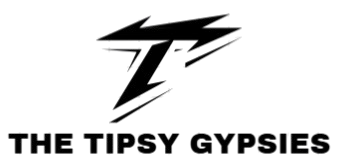Simpciry is a lifestyle and design approach that combines simplicity with clarity to create a life that feels lighter, calmer, and more intentional. It focuses on removing distractions, reducing mental clutter, and centering attention on what truly matters in both personal and professional life. While it shares some ideas with minimalism, Simpciry goes beyond it by putting emphasis on clear thinking, emotional well-being, and meaningful connections. In today’s fast-paced, technology-driven world, it offers a refreshing path to balance. This complete guide explains what Simpciry is, where it comes from, why it matters, and how to make it part of your everyday life.
Understanding What Simpciry Really Means
Simpciry is more than just having fewer things or being organized. It is a way of thinking that changes how you make decisions, set up your surroundings, and interact with people. At its core, Simpciry asks two simple questions: What is truly important here? How can I make it clear?
Unlike minimalism, which often focuses mainly on reducing physical possessions, Simpciry also applies to your digital life, relationships, work habits, and creative projects. It is about reducing unnecessary complexity while making sure that what remains is both useful and meaningful.
Many people describe Simpciry as a mental breath of fresh air, a release from the constant noise and overload of modern life. It creates space for ideas, relationships, and creativity to grow.
The Origins and Growth of Simpciry in the 2020s
Simpciry grew out of the lifestyle changes of the early 2020s. Remote work, constant social media use, and endless online content left many people feeling overwhelmed and disconnected from what was truly important.
By 2025, Simpciry became a recognized response to these pressures. Communities, writers, and designers began encouraging intentional living, cleaner design, and mindful digital use as ways to regain focus.
Simpciry is not just about decluttering your home. It is about making clear choices, regaining mental space, and building deeper human connections. Online communities, wellness blogs, and creative brands have all embraced Simpciry as a practical and human-centered approach to life.
The Core Principles of Simpciry
At its heart, Simpciry is built on three main principles:
Clarity in Purpose
Every choice, from how you plan your day to the tools you use, should have a clear reason and purpose.
Simplicity in Process
Tasks, systems, and environments should be set up to remove extra steps and avoid distractions.
Depth in Connection
Relationships, work, and experiences should focus on quality over quantity, creating real and meaningful engagement instead of shallow interactions.
When applied regularly, these principles create a lifestyle that feels intentional and steady, rather than rushed or reactive.
How Simpciry Differs from Minimalism and Essentialism
Minimalism focuses on owning fewer things. Simpciry uses reduction as a tool for clarity rather than an end goal. Essentialism focuses only on what is vital. Simpciry blends both but adds a focus on how experiences are designed and communicated.
For example, minimalism might remove decorative items from a desk. Simpciry goes further by arranging what remains in a way that makes your next action clear and supports deep focus. It is not about having the least possible, but about creating the clearest possible path to what matters most.
The Psychology That Supports Simpciry
The benefits of Simpciry are backed by well-known psychology and usability research. Cognitive load theory explains that humans can only process a limited amount of information at a time, and unnecessary complexity makes it harder to focus and perform well.
Hick’s Law states that the more options we have, the longer it takes to make a decision. By limiting non-essential choices, Simpciry helps people act faster and with greater confidence.
Research on choice overload shows that too many options often lead to indecision or regret. Simpciry avoids this by offering fewer but better options, whether in daily life, online experiences, or work processes.
Simpciry also aligns with calm technology, a design approach where tools provide what you need without constantly demanding attention.
Applying Simpciry to Daily Life
In Your Home
Start by looking at each room and asking what is useful and what is meaningful. Remove anything that does not meet one of these two criteria. This does not mean your home should be empty. Instead, it should feel calm, open, and ready to support your life.
In Your Digital Life
Digital clutter is one of the biggest causes of stress today. Simpciry here means keeping only the apps you actually use, turning off unneeded notifications, and unfollowing accounts that distract or drain you.
A simplified digital setup creates space for focus and creativity instead of constant interruptions.
In Your Time Management
Simpciry encourages you to focus on fewer, more important tasks. This might mean starting each day with just three main priorities and blocking out time for deep work without interruptions.
This approach leads to more meaningful progress and less burnout.
Simpciry in Relationships and Communication
Simpciry also applies to how we connect with others. In relationships, it means giving your full attention, having intentional conversations, and choosing quality time over constant shallow exchanges.
In communication, Simpciry values clear and direct language. Messages are short, easy to understand, and free from unnecessary details. This style saves time and builds trust.
Simpciry in Creative Work and Design
For artists, designers, and creators, Simpciry means focusing on the core message or purpose and removing anything that does not support it.
In branding, this could mean clean visuals, easy navigation, and marketing that speaks directly to what matters to your audience. In product design, it means simple layouts, clear actions, and friction-free use.
By removing the extra, Simpciry allows emotional connection to come forward, turning functional work into memorable experiences.
Simpciry for Businesses and Teams
For businesses, Simpciry can improve efficiency and build stronger customer trust.
In operations, it means reducing unnecessary tools, standardizing processes, and having clear decision-making systems.
In customer experience, it means offering clear instructions, avoiding overload, and making it easy for people to find what they need.
For branding, Simpciry helps businesses communicate openly and authentically. Instead of overwhelming customers with too many offers, they present simple, high-value solutions that meet real needs.
Emotional Benefits of Simpciry
People who practice Simpciry often feel lighter, calmer, and more in control. The mental space created allows for more presence in daily moments.
Relationships improve because there is less noise competing for attention. Creativity grows when focus is protected. Personal well-being improves as stress from decision fatigue decreases.
A Simple 30-Day Plan to Start Simpciry
Week 1: Identify and clear clutter in your physical, digital, and emotional spaces.
Week 2: Reduce digital noise. Turn off unneeded notifications, limit platforms, and organize files.
Week 3: Set time boundaries. Create focus hours, add breaks, and avoid multitasking.
Week 4: Reflect and adjust. Make sure your changes match your values and long-term goals.
By the end of the month, you will not only have a cleaner space but also a clearer mind.
Simpciry as a Long-Term Lifestyle
Simpciry is not a one-time project. It is an ongoing choice to live with clarity, purpose, and focus. Over time, you refine your values and habits so that your environment, decisions, and relationships all work in harmony.
The goal is not perfection. It is alignment between what you value and how you live.
Conclusion
Simpciry is a modern answer to the overwhelm of daily life. It helps you remove what does not serve you and create space for what truly matters.
By applying it in your home, work, relationships, and creative projects, you can build a life that feels clear, balanced, and full of purpose.
Its strength lies in its flexibility. You can adapt it to your own needs, let it grow with you, and enjoy the peace, stronger connections, and deeper satisfaction it brings. The journey starts with one choice: to live with less noise and more meaning.
Frequently Asked Questions ( FAQs )
What is Simpciry?
Simpciry is a lifestyle and design approach that combines simplicity with clarity to reduce distractions and focus on what truly matters. It applies to personal life, work, and digital spaces, creating environments that are calm, functional, and aligned with individual values.
How is Simpciry different from minimalism?
Minimalism focuses mainly on reducing possessions, while Simpciry goes further by also improving clarity in processes, communication, and experiences. It is not just about having less, but about making sure what remains is purposeful, easy to use, and supports deeper focus.
What are the benefits of living with Simpciry?
The benefits of Simpciry include reduced stress, improved focus, greater productivity, stronger relationships, and enhanced creativity. By removing unnecessary complexity, it creates mental space, increases decision-making confidence, and allows more time for meaningful activities and personal growth.
How can I start practicing Simpciry at home?
Begin by evaluating each space and keeping only items that are useful or meaningful. Remove clutter, simplify storage, and create open, organized areas. This creates a home environment that promotes calm, supports daily routines, and helps you focus on your priorities.
Can Simpciry improve digital life and productivity?
Yes. In digital life, Simpciry involves reducing apps, turning off unnecessary notifications, and organizing files for quick access. This lowers digital distractions, improves productivity, and allows more focused work time, making technology a supportive tool instead of a source of constant interruption.






